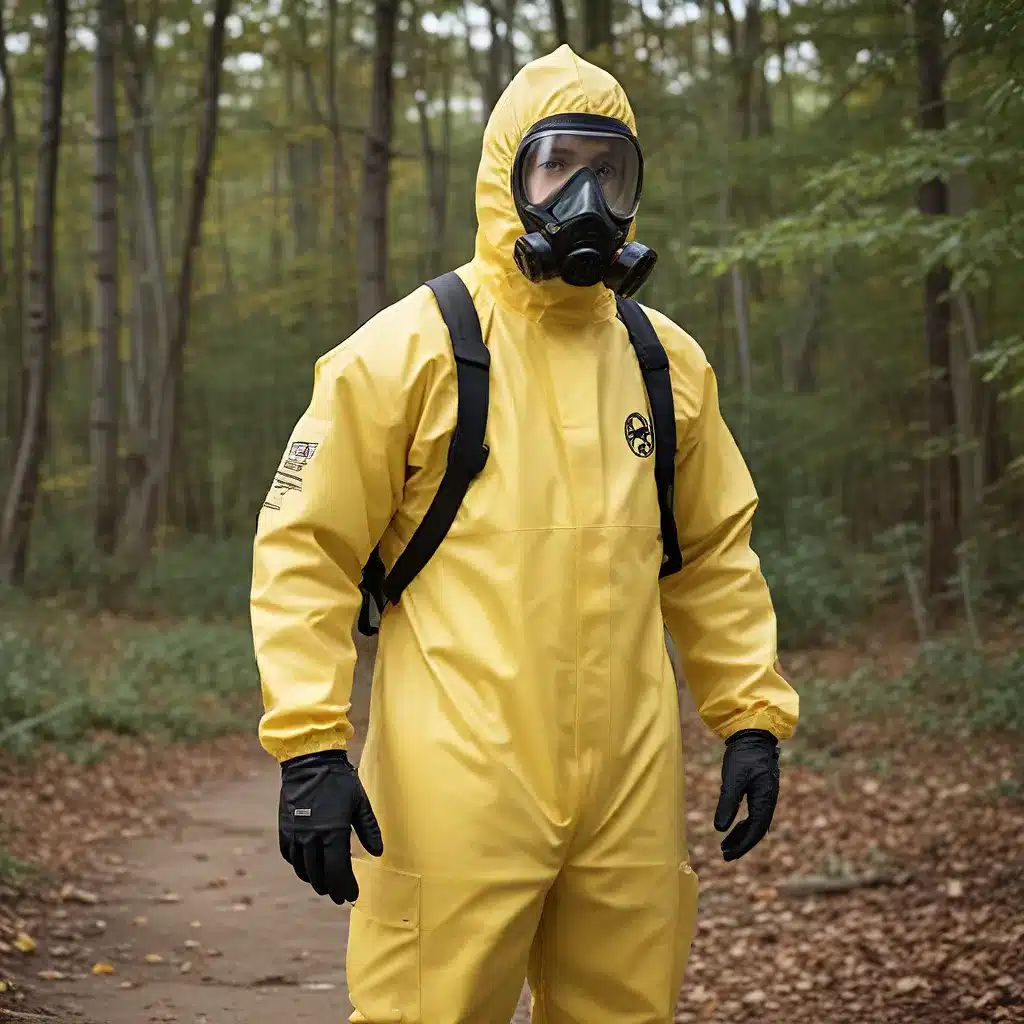As a seasoned professional in the cleaning industry, I’ve seen my fair share of hazardous situations. From dealing with bloodborne pathogens to tackling chemical spills, the importance of proper protective equipment cannot be overstated. In this comprehensive guide, I’ll take you through the essential tools and gear needed to ensure your safety and the safety of your team when faced with biohazardous materials.
The Importance of Personal Protective Equipment (PPE)
When it comes to biohazard cleanup, personal protective equipment (PPE) is absolutely crucial. It’s the first line of defense against the potential risks associated with handling infectious materials, hazardous chemicals, and other dangerous substances. Donning the right PPE can mean the difference between a successful cleanup and a disastrous situation.
Let’s start with the basics – disposable gloves. These are an essential item that should be worn at all times when dealing with biohazardous materials. The gloves need to be durable, provide a snug fit, and be resistant to chemicals and fluids. Choosing the wrong type of gloves can lead to leakage and direct contact with the hazardous substances, putting your health and safety at risk.
Next up, coveralls or protective clothing. These garments are designed to provide full-body coverage, minimizing the risk of contamination. When selecting coveralls, make sure they are made of a chemical-resistant and fluid-resistant material, ensuring maximum protection.
Respiratory protection is another critical component of PPE. Depending on the level of exposure, you may need anything from a simple face mask to a more advanced respirator. These tools prevent the inhalation of harmful particles, pathogens, or chemicals, keeping your lungs safe.
Lastly, eye and face protection is vital. Goggles or safety glasses shield your eyes from splashes, droplets, and aerosols, while face shields provide a physical barrier to your entire face. These are particularly important when working with potentially dangerous substances.
Proper Waste Disposal: Containing the Threat
Effective biohazard cleanup doesn’t end with just protecting yourself – proper waste disposal is equally essential. Sharps containers are specifically designed to safely store and dispose of used needles, syringes, and other sharp objects, preventing accidental exposure and injuries.
Biohazard bags and liners are another crucial component of the cleanup process. These specialized bags are leak-proof and clearly labeled to indicate their hazardous contents, ensuring safe and compliant waste management.
In the event of a spill or accident, having a biohazard spill kit on hand can be a lifesaver. These kits typically include absorbent materials, disinfectants, personal protective equipment, and detailed instructions for proper cleanup. By quickly containing and decontaminating the affected area, you can minimize the spread of contamination and reduce the overall risk.
Cleaning and Decontamination Tools
Once you’ve donned your PPE and secured the hazardous waste, it’s time to tackle the actual cleaning and decontamination process. Disinfectant wipes or sprays are essential for effectively killing bacteria, viruses, and other harmful pathogens on various surfaces.
Disposable mops and wipes are convenient and hygienic options for removing spills and residues, while absorbent powders or granules can be used to contain and immobilize liquid spills, making the cleanup process safer and more efficient.
Scoops, shovels, and spray bottles are all valuable tools for the hands-on work of biohazard cleanup. These allow you to safely collect, transport, and apply disinfectants to the affected areas, ensuring a thorough and effective decontamination.
Don’t forget the importance of scrub brushes for tackling stubborn stains or residues, and tweezers or forceps for precisely handling small or delicate biohazardous items.
Specialized Equipment for Larger-Scale Disinfection
When dealing with large-scale biohazard cleanup or high-risk environments, you may need to employ some specialized equipment to ensure comprehensive disinfection.
Fogging machines, for example, emit a fine mist or fog of disinfectant, allowing for complete coverage of hard-to-reach areas and larger spaces. UV sterilization equipment is another effective tool, using ultraviolet light to kill or deactivate a wide range of pathogens on surfaces and objects.
In medical, laboratory, and research settings, autoclaves are commonly used to sterilize equipment, instruments, and other reusable items through the application of high heat and pressure. These specialized devices provide a reliable and efficient way to eliminate harmful microorganisms.
Bloodborne Pathogen Cleanup: Addressing the Risks
One of the most challenging and potentially dangerous aspects of biohazard cleanup is dealing with bloodborne pathogens. These can include viruses like HIV and hepatitis B and C, which can be transmitted through exposure to infected blood or bodily fluids.
Bloodborne Pathogen Cleanup Kits are essential for safely handling these situations. These specialized kits typically include disposable gloves, biohazard bags, protective clothing, and face shields, among other essential items. Having these kits readily available in areas where blood spills or accidents may occur can help prevent the spread of contamination and minimize the risks.
In addition to the specialized cleanup kits, hand sanitizers, surface disinfectants, and personal hygiene supplies like tissues and paper towels are crucial for maintaining a clean and hygienic environment during the cleanup process.
Staying Up-to-Date and Informed
Biohazard cleanup is a constantly evolving field, with new regulations, best practices, and safety protocols being introduced all the time. To ensure you and your team are always working at the highest level of safety and efficiency, it’s essential to stay up-to-date on the latest developments.
Training manuals, videos, and online courses can provide invaluable information and guidance on proper biohazard cleanup procedures and safety protocols. Reference books and safety posters can also serve as handy resources for quick referencing and reinforcement of key principles.
By staying informed and proactive, you’ll be better equipped to handle any biohazardous situation that comes your way, protecting both yourself and your clients. Remember, when it comes to biohazard cleanup, safety should always be the top priority.
Now, let’s explore the cleaning services we offer that can help you tackle even the most daunting biohazard cleanup challenges.







